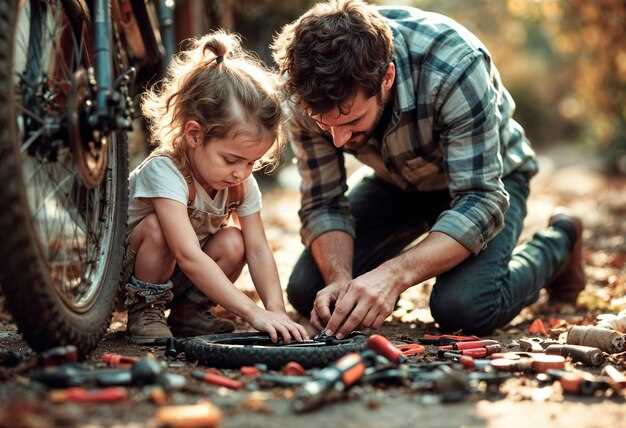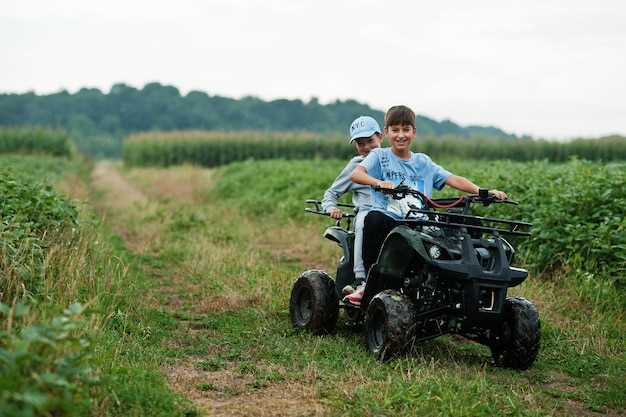
Engaging children in off-road ATV adventures can be an exhilarating experience, providing them with a sense of freedom and excitement. However, ensuring their safety is paramount. Proper supervision plays a critical role in these outdoor activities, safeguarding young riders from potential accidents and developing their riding skills responsibly. Understanding the responsibility associated with ATV usage is essential for both parents and guardians.
When children operate all-terrain vehicles, they encounter a unique combination of challenges and risks. The unpredictability of off-road terrain, coupled with a child’s limited experience, necessitates vigilant supervision to help navigate these obstacles safely. Adults need to actively monitor their children’s actions, providing guidance and enforcing safety protocols that can significantly reduce the likelihood of incidents.
To foster a safe riding environment, setting clear rules and safety measures is equally important. Kids should be taught the importance of wearing appropriate safety gear and following safe driving practices. With the right combination of supervision, education, and safety precautions, families can create unforgettable ATV adventures that prioritize safety while fostering a love for outdoor exploration.
Establishing Safety Guidelines for Young ATV Riders
When introducing your child to off-road ATV adventures, it’s crucial to establish clear safety guidelines to ensure a secure and enjoyable experience. These guidelines will help reinforce the importance of supervision and responsible riding practices.
- Age Appropriateness: Ensure that the ATV is suitable for your child’s age and size. Many manufacturers provide specific recommendations based on these factors.
- Supervision: Always supervise young riders. An adult should be present to oversee their activity and intervene if necessary. This supervision is essential in maintaining a safe environment.
- Protective Gear: Require your child to wear helmets, gloves, goggles, long sleeves, long pants, and boots. Proper protective gear minimizes the risk of injury in case of falls or collisions.
- Training: Provide your child with proper training before they try to ride. Consider enrolling them in a certified ATV safety course designed for kids to teach them essential riding skills.
- Riding Together: Encourage family riding. Riding together allows parents to supervise while also fostering shared experiences and instilling responsible riding habits.
- Setting Boundaries: Define specific boundaries for where your child can ride. Clearly marked trails are ideal and can help prevent your child from venturing into unsafe areas.
- Rules of the Ride: Establish and enforce rules, such as no riding after dark, no carrying passengers unless the ATV is designed for it, and prohibiting reckless riding behavior.
- Communication: Regularly discuss safety with your child. Encourage them to voice any concerns they may have and reinforce the importance of adhering to safety guidelines.
By implementing these safety guidelines, you not only protect your child but also foster a sense of responsibility and respect for safe ATV riding practices. The combination of supervision, proper training, and clear rules can lead to fun and safe off-road adventures.
Identifying Appropriate Gear and Equipment for Child Safety

When preparing children for off-road ATV adventures, selecting the right gear is crucial for ensuring their safety. The foundation of safety gear includes a well-fitted helmet designed specifically for youth. Look for helmets that meet safety standards such as DOT or Snell certifications to provide adequate protection during rides.
In addition to helmets, eye protection is essential. Goggles prevent dust and debris from getting into children’s eyes, enhancing visibility and comfort while riding. They should fit snugly and have anti-fog features to maintain clarity during different weather conditions.
Proper clothing is another vital aspect of child safety when operating an ATV. Durable, long-sleeve shirts and pants made from protective materials can minimize the risk of abrasions during falls. Always ensure that clothing is free of any loose fittings or accessories that could get caught in the ATV machinery.
Footwear should also be carefully considered. Sturdy, over-the-ankle boots that provide good traction will help protect children’s feet and ankles from injuries. Avoid sneakers or sandals, as these do not offer sufficient protection or grip on rough terrain.
Lastly, padding and protective gear such as knee pads and elbow guards can significantly reduce the risk of injury in case of falls. Look for options made from high-quality materials that offer both protection and comfort. Ensuring that children have the correct equipment tailored to their size and the type of terrain they will be navigating is crucial for a safe ATV experience.
Monitoring Riding Behavior to Prevent Accidents

Ensuring the safety of kids during off-road ATV adventures requires diligent supervision and effective monitoring of their riding behavior. Accidents can occur when young riders exhibit reckless actions or fail to adhere to safety protocols. Therefore, it is crucial for parents and guardians to observe their children closely while they navigate trails.
One key aspect of monitoring involves setting clear guidelines about safe riding practices. Kids should be educated on the importance of wearing helmets and protective gear, as well as following speed limits and avoiding risky maneuvers. Regularly discussing these rules reinforces their significance and encourages responsible riding behavior.
Additionally, utilizing technology can enhance supervision. Many modern ATVs come equipped with tracking systems that allow parents to monitor their child’s location and speed in real-time. This data can help identify any concerning behaviors, such as speeding or straying too far from designated areas, enabling timely intervention.
Engaging in rides together as a family can also provide a platform for direct observation of riding skills. This way, guardians can offer constructive feedback and actively correct any unsafe practices. By participating, adults emphasize the importance of safety while fostering a supportive environment for skill development.
In summary, effectively monitoring riding behavior is essential in preventing accidents during ATV adventures. Through proper supervision, clear communication, and the use of technology, parents can help ensure a safe and enjoyable experience for their children.
 Skip to the content
Skip to the content 